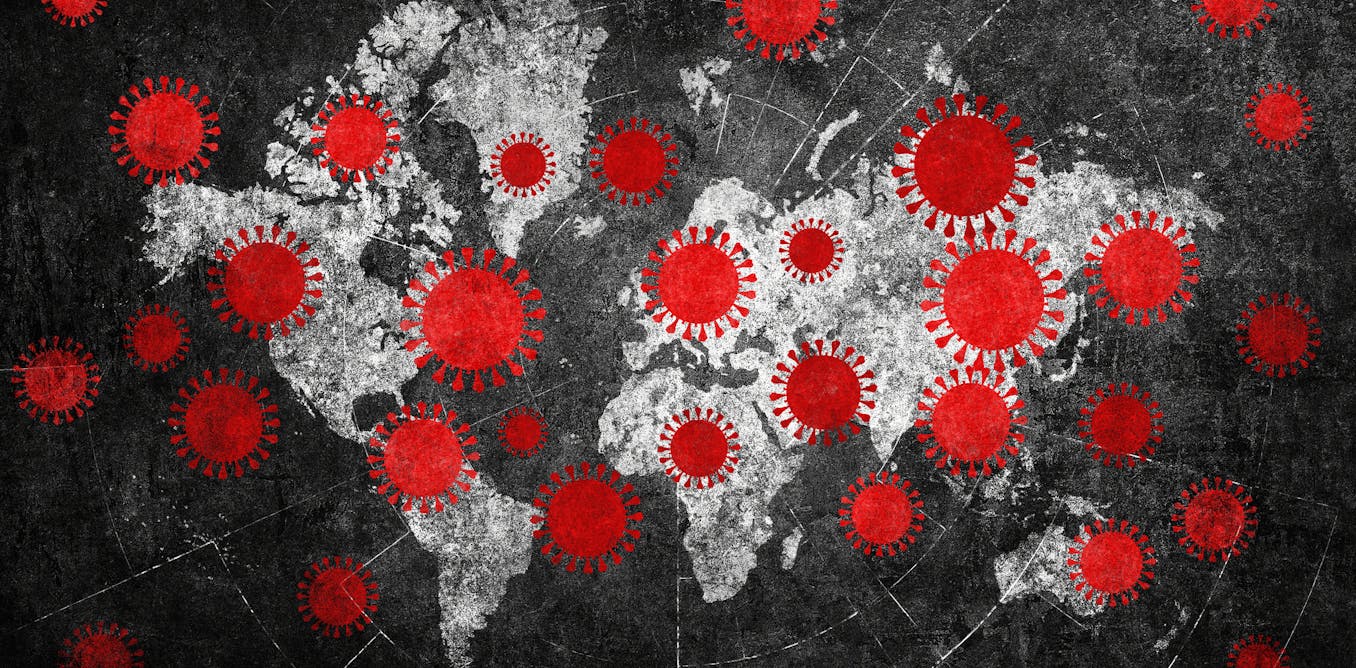Listen to this article
Estimated 3 minutes
The audio version of this article is generated by AI-based technology. Mispronunciations can occur. We are working with our partners to continually review and improve the results.
The 12 Days of Christmas…

Listen to this article
Estimated 3 minutes
The audio version of this article is generated by AI-based technology. Mispronunciations can occur. We are working with our partners to continually review and improve the results.
The 12 Days of Christmas…

Listen to this article
Estimated 4 minutes
The audio version of this article is generated by AI-based technology. Mispronunciations can occur. We are working with our partners to continually review and improve the results.
City officials are urging…

Chronic obstructive pulmonary disease (COPD) is characterized by persistent airflow limitation and chronic airway inflammation, and has become a major global public health burden. According to projections by the World Health…

KSE-100 index rises to 186,518 points as banking, oil & gas and power shares attract buying
Pakistan Stock Exchange (PSX) maintained its bullish trajectory on Wednesday, with the benchmark KSE-100 index closing at a fresh record, supported by continued buying from local institutional investors.
The market opened on a weak note, with the index falling sharply in early trade to an intra-day low of 184,896.71. However, sentiment improved as buying interest returned, leading to a broad-based salvage during the late morning and afternoon sessions.
The KSE-100 index touched an intra-day high of 187,015.12 before settling at 186,518.72, up 1,456.61 points, or 0.79%, from the previous close.
Market participants attributed the strong close to sustained institutional flows, which helped the index overcome early pressure and end the session at a new all-time high.
Topline Securities observed that the local bourse remained firmly up and running, extending its stellar momentum to notch an all-time high close at 186,518. The benchmark index witnessed a highly buoyant session, surging to an intra-day high of 1,953 points, while profit-taking remained modest, with the intra-day low capped at 165 points, underscoring the market’s underlying strength.
Optimism has carried over decisively into 2026, with PSX gaining a robust 12,464 points, or +7.2% in the first five trading sessions of the year. The powerful start reflects sustained investor confidence, driven largely by aggressive buying from local funds.
The shift in asset allocation from fixed-income instruments to equities amid declining returns on traditional avenues has continued to fuel liquidity and support elevated valuations, it stated.
Heavyweight stocks once again led from the front with Hub Power, Pakistan Petroleum, Engro Holdings, MCB Bank, and Meezan Bank emerged as key drivers, collectively contributing around 766 points to the index’s advance, Topline added.
Ismail Iqbal Securities stated that the benchmark index closed on a positive note, once again setting fresh all-time highs both intra-day and at market close for the fifth consecutive session.
The 2026 rally continued in full swing, driven by strong liquidity inflows and ongoing asset class conversion, keeping investor optimism firmly intact. Power generation & distribution, oil & gas exploration companies, and cement sectors were the major contributors in Wednesday’s session, cumulatively adding 689 points to the index, the research house added.
Overall trading volume increased to 1.32billion compared with Tuesday’s tally of 1.30billion. Value of traded shares stood at Rs86.5billion. Shares of 486 companies were traded. Of these, 299 rose, 161 fell and 26 remained unchanged. K-Electric continued to secure the volume lead with trading in 77.9million shares, remaining almost flat to close at Rs6.55.
DHAKA, Jan. 7 (Xinhua) — Bangladesh’s national flag carrier Biman Bangladesh Airlines is all set to resume direct flights from Pakistan’s Karachi to Bangladesh’s capital Dhaka later this month, said a spokesperson for the airlines on…
DHAKA, Jan. 7 (Xinhua) — Bangladesh’s national flag carrier Biman Bangladesh Airlines is all set to resume direct flights from Pakistan’s Karachi to Bangladesh’s capital Dhaka later this month, said a spokesperson for the airlines on…
Defence Minister Rajnath Singh has paid tribute to Lieutenant General SK Sinha on his birth centenary celebrations in New Delhi today. Addressing the Lieutenant General SK Sinha Memorial Lecture virtually, Mr Singh lauded the enduring legacy…

Technically, the main trend is up. A trade through the record high at $4,536.74 will signal a resumption of the uptrend. The main trend will change to down if $4,274.02 fails. However, buyers are likely to reemerge on a pullback into the intermediate 50% level at $4,211.60 and the 50-day moving average at $4,202.03.
The 50-day MA is what’s holding this entire rally together. If it is taken out with heavy selling pressure and conviction, the market could collapse on aggressive long-liquidation. Until then, the market will remain in “buy the dip” mode.
The short-term range is $4,536.74 to $4,274.02. Gold is currently testing its retracement zone at $4,436.38 to $4,405.38. Holding this area will indicate the presence of strong buyers and a greater chance of a new record high.
However, if $4,405.38 fails as support, the odds of a pullback to last week’s low at $4,274.02 increase.

A new year might mean new viral threats.
Old viruses are constantly evolving. A warming and increasingly populated planet puts humans in contact with more and different viruses. And increased mobility means that viruses can rapidly travel…